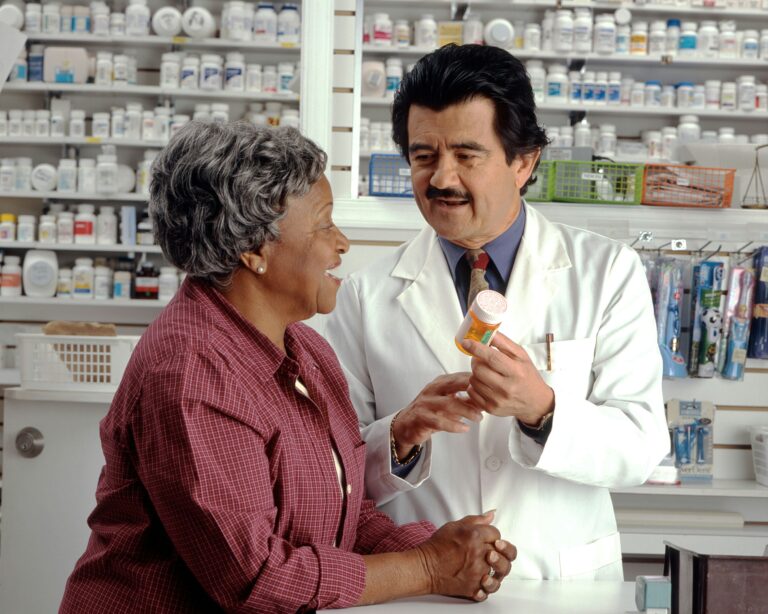GLP-1 Prescribing Decisions: Should You Choose Compounded or Brand-Name?
Table of Contents
ToggleGLP-1 Prescribing Decisions: Should You Choose Compounded or Brand-Name?

What’s the debate?
Medscape’s late-2024 report captured a split among clinicians over compounded GLP-1s vs brand-name products. Several experts caution against routine use of compounded versions because quality and dose consistency can vary; others consider them a last-resort option when brand-name drugs are genuinely unavailable. The core trade-offs center on safety, quality control, cost, and access—and on how quickly drug shortages are resolving.
1. What “compounded” means in plain English
“Compounded” medications are custom-made by licensed compounding pharmacies for an individual prescription.
Unlike FDA-approved brand-name drugs, compounded products are not FDA-approved for safety or efficacy and can show more variability between batches and pharmacies, even when prepared carefully.
The FDA defines compounding as preparing a drug for a specific patient need that cannot be met with commercially available products — but warns against using compounded GLP-1s unless medically necessary.
2. Safety & quality: why many clinicians still favor brand-name
Regulatory Oversight
Brand-name GLP-1 medications like Ozempic, Wegovy, and Mounjaro are FDA-approved, ensuring consistent dosing, purity, and stability.
Compounded versions, while legal in specific cases, lack the same pre-market review.
Ingredient Identity
The FDA has warned about semaglutide salt forms (like semaglutide sodium or acetate) appearing in some compounded products — not the approved active ingredient — which may make them inappropriate for injection.
Consistency
Reports of mislabeling or potency errors — though uncommon — explain why many academic centers avoid compounding unless a verified shortage exists.
Bottom line: If you can obtain a brand-name GLP-1 safely and affordably, most experts prefer it.
3. Access, Cost & Coverage — Quick Comparison
Patients often explore compounding due to supply shortages, insurance denials, or high out-of-pocket costs. Responsible prescribers — if they consider compounding — use verified 503A pharmacies, confirm the correct active ingredient, and plan to transition to brand-name once available.
Cost & Coverage Summary
Factor | Brand-Name GLP-1 (e.g., Ozempic/Wegovy/Mounjaro) | Compounded GLP-1 (patient-specific) |
Typical monthly price | High list prices; net cost varies with insurance or coupons (hundreds USD/CAD after adjustments) | Often lower sticker price; commonly $100–$500/month depending on dose and pharmacy |
Insurance coverage | Frequently covered for type 2 diabetes; mixed for obesity. Prior authorization common | Usually not covered (cash pay). Some HSA/FSA funds may apply |
Availability during shortages | Can be limited; pharmacies may have waitlists | Sometimes faster access — depends on ingredient supply and pharmacy capacity |
Dose consistency & quality | High — FDA-approved manufacturing with strict controls | Variable — depends on pharmacy and sterility practices |
Regulatory status | FDA-approved drug products and labels | Not FDA-approved; made under state 503A regulations |
Monitoring | Required titration, side-effect tracking | Same, plus vigilance for potency/lot variation |
4. When Compounding Is Considered (Typical Scenarios)
Compounded GLP-1s should only be considered in specific cases:
Verified brand shortage in your area.
Temporary bridge while prior authorization is pending.
Rare ingredient allergy to a brand excipient.
All scenarios require informed consent, explaining that compounded GLP-1s are not FDA-approved and may vary in potency and stability.

5. How to Vet a Compounding Pharmacy (Patient Checklist)
✅ Licensing & reputation: Confirm the pharmacy is state-licensed and known to local prescribers.
✅ Correct active ingredient: Ask for documentation verifying semaglutide base or tirzepatide base, not salt forms.
✅ Testing & documentation: Request Certificates of Analysis (COAs) and sterility/potency test results.
✅ Labeling & storage: Ensure clear lot numbers, beyond-use dates, and refrigeration instructions.
If any answers are vague, pause and discuss with your prescriber before proceeding.
6. Transition & Safety Reminders for All GLP-1 Users
If you start a compounded product due to shortage, plan to transition back to a brand-name once available.
Match the nearest equivalent dose and monitor:
Weight, GI tolerance, and glucose (if diabetic).
Common side effects like nausea, vomiting, diarrhea, or constipation — usually mild and improved with slow titration.
Contact your clinician for severe or persistent GI symptoms, dehydration, or allergic reactions.
Lifestyle still matters: Balanced eating, regular activity, and sleep help any GLP-1 therapy work more effectively and sustainably.
🔗 Related Reading on Our Site
📚 References
Medscape. GLP-1 Prescribing Decisions: Compounded or Brand-Name? (2024).
U.S. Food and Drug Administration (FDA). Human Drug Compounding. https://www.fda.gov/drugs/human-drug-compounding
American Diabetes Association. Standards of Care in the Management of Obesity and Diabetes (2024).